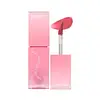What's inside
What's inside
 Key Ingredients
Key Ingredients

No key ingredients
 Benefits
Benefits

 Concerns
Concerns

 Ingredients Side-by-side
Ingredients Side-by-side

Water
Skin ConditioningPolyisobutene
Phenyl Trimethicone
Skin ConditioningPhytosteryl/Isostearyl/Cetyl/Stearyl/Behenyl Dimer Dilinoleate
Skin ConditioningDiglycerin
HumectantBis-Diglyceryl Polyacyladipate-2
EmollientOctyldodecanol
EmollientPolysorbate 60
EmulsifyingSorbitan Stearate
EmulsifyingCetyl PEG/PPG-10/1 Dimethicone
Emulsifying1,2-Hexanediol
Skin ConditioningHydroxyethyl Acrylate/Sodium Acryloyldimethyl Taurate Copolymer
Emulsion StabilisingTitanium Dioxide
Cosmetic ColorantSqualane
EmollientPolyglycerin-3
HumectantButylene Glycol
HumectantPolyglyceryl-10 Isostearate
Skin ConditioningEthylhexylglycerin
Skin ConditioningGlycerin
HumectantCI 15985
Cosmetic ColorantAcid Red 33
Benzyl Benzoate
AntimicrobialParfum
MaskingSorbitan Isostearate
EmulsifyingAluminum Hydroxide
EmollientCI 19140
Cosmetic ColorantLinalool
PerfumingTriethoxycaprylylsilane
Methyl Methacrylate Crosspolymer
CI 42090
Cosmetic ColorantSimethicone
EmollientGlyceryl Caprylate
EmollientHexyl Cinnamal
PerfumingWater, Polyisobutene, Phenyl Trimethicone, Phytosteryl/Isostearyl/Cetyl/Stearyl/Behenyl Dimer Dilinoleate, Diglycerin, Bis-Diglyceryl Polyacyladipate-2, Octyldodecanol, Polysorbate 60, Sorbitan Stearate, Cetyl PEG/PPG-10/1 Dimethicone, 1,2-Hexanediol, Hydroxyethyl Acrylate/Sodium Acryloyldimethyl Taurate Copolymer, Titanium Dioxide, Squalane, Polyglycerin-3, Butylene Glycol, Polyglyceryl-10 Isostearate, Ethylhexylglycerin, Glycerin, CI 15985, Acid Red 33, Benzyl Benzoate, Parfum, Sorbitan Isostearate, Aluminum Hydroxide, CI 19140, Linalool, Triethoxycaprylylsilane, Methyl Methacrylate Crosspolymer, CI 42090, Simethicone, Glyceryl Caprylate, Hexyl Cinnamal
Dimethicone
EmollientCyclopentasiloxane
EmollientDimethicone Crosspolymer
Emulsion StabilisingCyclohexasiloxane
EmollientPolyglyceryl-2 Triisostearate
EmulsifyingCI 15985
Cosmetic Colorant1,2-Hexanediol
Skin ConditioningCI 45410
Cosmetic ColorantCyclotetrasiloxane
EmollientPhenoxyethanol
PreservativeParfum
MaskingTocopheryl Acetate
AntioxidantCamellia Sinensis Seed Oil
HumectantGossypium Herbaceum Seed Oil
Skin ConditioningMangifera Indica Seed Oil
EmollientIngredients Explained
These ingredients are found in both products.
Ingredients higher up in an ingredient list are typically present in a larger amount.
1,2-Hexanediol is a synthetic liquid and another multi-functional powerhouse.
It is a:
- Humectant, drawing moisture into the skin
- Emollient, helping to soften skin
- Solvent, dispersing and stabilizing formulas
- Preservative booster, enhancing the antimicrobial activity of other preservatives
Ci 15985 is a dye made from petroleum. It is synthetically created and approved by the FDA for use in foods and cosmetics.
The color of this dye is orange/yellow.
This ingredient can be found in makeup, sun care, and skincare.
Learn more about CI 15985Parfum is a catch-all term for an ingredient or more that is used to give a scent to products.
Also called "fragrance", this ingredient can be a blend of hundreds of chemicals or plant oils. This means every product with "fragrance" or "parfum" in the ingredients list is a different mixture.
For instance, Habanolide is a proprietary trade name for a specific aroma chemical. When used as a fragrance ingredient in cosmetics, most aroma chemicals fall under the broad labeling category of “FRAGRANCE” or “PARFUM” according to EU and US regulations.
The term 'parfum' or 'fragrance' is not regulated in many countries. In many cases, it is up to the brand to define this term.
For instance, many brands choose to label themselves as "fragrance-free" because they are not using synthetic fragrances. However, their products may still contain ingredients such as essential oils that are considered a fragrance by INCI standards.
One example is Calendula flower extract. Calendula is an essential oil that still imparts a scent or 'fragrance'.
Depending on the blend, the ingredients in the mixture can cause allergies and sensitivities on the skin. Some ingredients that are known EU allergens include linalool and citronellol.
Parfum can also be used to mask or cover an unpleasant scent.
The bottom line is: not all fragrances/parfum/ingredients are created equally. If you are worried about fragrances, we recommend taking a closer look at an ingredient. And of course, we always recommend speaking with a professional.
Learn more about Parfum